Here are strategies for reading food labels for allergens to help you build your label reading skill set.
Before Heading to the Grocery Store
1. Create family decision rules for label reading and stick to them.
You want to be consistent when deciding which foods to buy versus not. Family label reading rules can help you navigate “Contains” statements and Precautionary Allergen Labels (PALs) that sometimes appear below “Contains” statements.
What are PALs? These are statements that disclose if a food “May Contain” specific allergens, is made on shared equipment with other allergen-containing foods, or is made in shared facilities with other allergen-containing foods.
PALs are voluntary for manufacturers and are not regulated by the FDA. While by law they must be truthful, their meanings may vary depending on the manufacturer, their facilities, their equipment and processes.
Some manufacturers provide PALs and they will appear below the the “Contains” statement (which IS regulated by the FDA.* ) Other manufacturers choose not to provide PALs.
2. Call manufacturers to research any new products you would like to buy.
Ask detailed questions about their facilities, equipment and processes so you can understand the cross contamination risk and determine if the risk is acceptable for your family to accept. (Find questions to guide your call below.** )
At the Grocery Store
1. Read the label for every product you put in your shopping cart, even if you’ve bought it before.
Manufacturers sometimes change their ingredients and/or their manufacturing processes and you can be caught off guard if you are not vigilant.
2. Look for a “Contains” statement under the “Ingredients List”.
This statement discloses allergens using the most common names for the allergens. This can help you quickly rule out foods containing any {top} allergens you’re allergic to. Eggs, fish, milk, peanuts, shellfish (crustacean like crab or shrimp), soy, tree nuts, and wheat are currently disclosed. Sesame disclosure on labels will be required in 2023.
3. Review all PALs under the “Contains” statement.
Your family rules will help you decide whether to take a pass on a product or buy it. If you have questions, you can try calling the manufacturer while you’re at the store, but that can be hard while you’re shopping. If you see a new product that’s interesting, hold that thought. Take a picture of its UPC code and ingredients list and call the manufacturer when you get home before your next shopping trip.
4. Read the detailed ingredients list at least TWICE.
First read the list from beginning to end, and then read it from end to beginning. It can help to say the ingredients to yourself so you don’t skim over one. While this may feel strange, it can help you focus while reading in a busy/noisy store.
Top allergens will be called out either by their common names (like “Milk”) or in parentheses following a less common name (like “Whey (Milk)” ) or in a “Contains” statement under the “Ingredients List”.
This ‘read two times’ step is especially important for families managing non-top allergens that can be buried in a long “Ingredients List”.
5. Apps can help you review labels while you shop and save you time.
Use technology as a second set of eyes. Keep in mind, though, while technology can speed up the label reading process, it should never replace your human judgement. It’s an ‘assist’, not a replacement, for your own assessment. Search for barcode scanning apps on the app stores. As an example, the Allergy Force food allergy app offers a barcode scanner that helps you quickly rule out foods with your allergens.
6. Stay vigilant. Be cautious.
Hidden Allergens
Allergens sometimes hide on labels under uncommon names. It’s important to know the uncommon names for your allergens. For example lecithin is frequently soy-derived and can be egg-derived, as well. This disclosure is governed by U.S. food labeling law. However, lecithin can also come from sunflower seeds or corn, appearing as just “Lecithin” on a food label. Imitation crab (surimi) can contain eggs, shellfish, fish, soy, and wheat, as well as corn or potato. Sesame seeds can also be called benne seeds, or benniseed, or til, or many other things. “Natural flavorings” and “Spices” are minefields of unknowns. Check out this hidden allergen information from Kids With Food Allergies.
Refined Oils
Highly refined oils, like refined peanut oil, are exempted from allergen labeling requirements because the allergen proteins are destroyed during the refining process. While labels must disclose what kind of oil is used, the oil does not have to be listed as an MFA. You will need to decide if your family is comfortable bringing refined oil made from one of your allergens into your home. Think about it. If you have a peanut allergy, are you comfortable having and using peanut products in your home?
After the Grocery Store
1. Read the label a final time right before you eat the food you purchased.
2. Research any new finds from your grocery store visit.
Call manufacturers and ask questions about their facilities, shared equipment and quality assurance processes. (Find questions to guide your call below.** )
3. Pay close attention to recalls.
You can stay in the loop on recalls by subscribing directly to FDA and KFA alerts, or by using apps like the Allergy Force food allergy app that continuously consolidates and features alerts on its home page.
4. Look for certified products with certifications that comply with rigorous, auditable standards.
This can give you more peace of mind. For example, MenuTrinfo’s pending ANSI-ANAB accreditation, ISO 17065, will back their new ‘CFF’ certification that certifies products and/or manufacturing facilities to be free from specific ingredients, like specific allergens or gluten or animal products.
5. Be a vocal consumer.
Support petitions to improve food label transparency. Respond to regulatory agency requests for comment on proposed changes to food labeling rules and regulations. (So you know what to look for, here’s an example of the FDA’s 2018 request for comments when considering sesame’s addition to the MFA list.)
6. Become a food label expert over time.
Here are some resources to help you build your skill set:
- FAACT on food labeling
- FARE on how to read food labels
- Kids with Food Allergies on choosing safe foods
- AAAAI on food labels
- The Food Allergen Labeling and Consumer Protection Act of 2004 (FALCPA) and additional FDA information on food allergies.
- The FASTER Act of 2021 details for the food industry.

Allergy Force is committed to helping people with food allergies live freely — with less fear, less anxiety, more confidence — through technology and education. The Allergy Force food allergy app is peace of mind in your pocket.. |
|
… |
|
Image: Gustavo Fring on Pexels
Footnotes
* To Feed Your Inner ‘Nerd’—The History of Food Labeling
Food labels were originally developed in the 1960’s to supply nutritional information. They were not designed to help consumers determine if a food was safe to eat for people with food allergies.
In 2006, FALCPA (The Food Allergen Labeling and Consumer Protection Act of 2004) became effective and required all food labels in the U.S. to list ingredients that may cause allergic reactions. FALCPA is regulated by the FDA.
While individual ingredients can obtain exemptions, the FDA cannot simply add a new major food allergen (MFA) to the list of allergens called out on food labels. Amending the MFA list requires an act of Congress, as we saw in 2021 when the FASTER ACT was passed and sesame was added to the MFA list. Manufacturers have until 2023 to implement sesame labeling.
While the top 8 allergens + sesame account for an estimated 90% of allergic reactions, if you are allergic to a non-top allergen, food label reading can be even more of a challenge.
** A Word About Precautionary Allergen Labels
Handle with care.
PALs are voluntary for manufacturers. They are not regulated by the FDA under FALCPA. PALs must be truthful and not misleading, but that’s as far as FALCPA takes it.
1. When food is “Manufactured/Made in the Same Facility”, what does this really mean?
Does the manufacturer have two different lines in the same room? Two different lines in two different, but adjacent rooms? Two different lines in different physical locations separated by some distance? The risk levels are different, but the disclosure is identical.
And where do the employee lunchroom and break room vending machines fit into the mix? Are PBJ sandwiches lurking in employee lunchboxes? What control measures are in place to prevent those allergens from coming into contact with the manufactured products?
The only way you can evaluate the risk is by calling the manufacturer.
2. When food is “Manufactured/Made on the Same Equipment”, what does this tell you?
How is the equipment cleaned between production runs? Is equipment cleaned between runs using a water rinse? A sanitation cleaning? A full allergen cleaning? Again, the contamination risk levels vary by cleaning method, but the disclosure is identical.
The only way you can evaluate the risk is by calling the manufacturer.
3. When there is NO Precautionary Allergen Labeling on a package, what does that tell you?
The short answer? Not very much. The absence of the voluntary labeling does not mean cross contamination risks don’t exist in the manufacturer’s facilities, or on their production lines. They have elected not to disclose them.
As an ‘at risk’ food allergic consumer, the only way you’ll know what is going on at a manufacturer’s production facility is by calling them directly and asking detailed questions.


